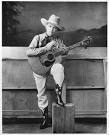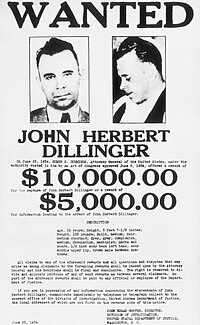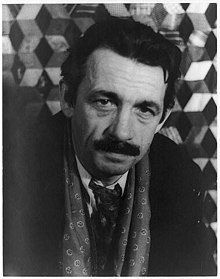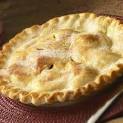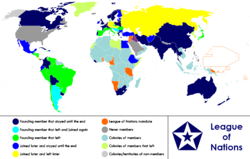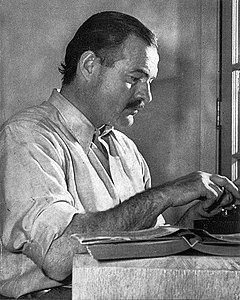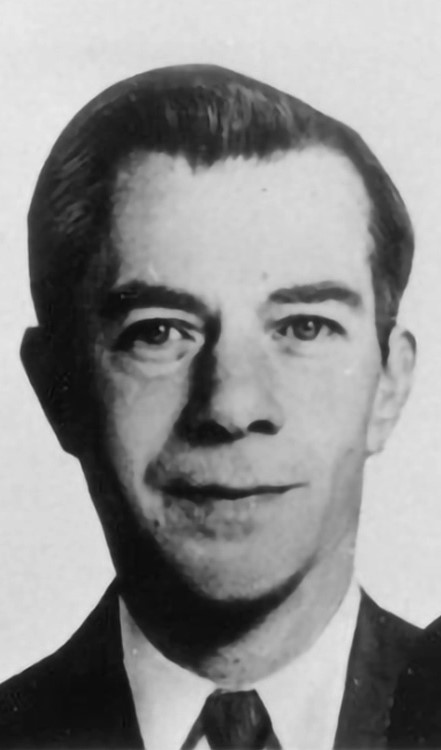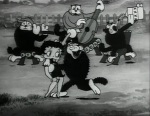 |
| Leningrad, Russia - October 31, 1933 In response to advances in German rocketry, the Soviet Government merges GIRD (Jet Propulsion Research Group) with GDL (Gas Dynamics Laboratory) in Leningrad. The merger creates the RNII (Jet Propulsion Research Institute), headed up by the military engineer Ivan Kleimenov. This group contains a number of people who are are enthusiastic proponents of space travel, including Valentine Glushko. Sergey Korolyov becomes the Deputy Chief of the institute, where he will lead the development of cruise missiles and of a manned rocket-powered glider. |
The daily diary entries from Ruth Catherine McKenzie McCoy. Her daughter, author Fran Baker, has included photos, historic notes and "old-time" recipes following the entries. Readers are welcome to comment.
Monday, October 31, 2011
Tuesday, October 31, 1933
Today was Hallowe'en. This evening Beatrice and Virginia and their brother and Bernice and I went Hallowe'ening.
Sunday, October 30, 2011
Monday, October 30, 1933
Daddy took me to school this morning. We had a substitute in History today. Walked home with Ruth.
Saturday, October 29, 2011
Sunday, October 29, 1933
Mother and I went to Sunday School and church. We went out east and rode around a lake in the afternoon.
 |
| Lake Lotawana Lake Lotawana was developed in the late 1920s and early 1930s in eastern Jackson County by Milton Thompson. Legend has it that Jesse James and the Quantrill's Raiders used to hide out in the area where Lake Lotawana was later developed. In fact, the tale goes on to say that Jesse James actually had a cabin on the lake ... though no one has ever been able to confirm said cabin's location. Today, the City of Lake Lotawana is home to over 2,000 residents. |
Friday, October 28, 2011
Saturday, October 28, 1933
Got Mrs. Raifert some meat. Cut my hand. Went over to Helen's. Had a swell time. Traded dresses with Helen. They brought us home.
 |
| Jesse Clyde Nichols, better known as J.C. Nichols (August 23, 1880 - February 16, 1950), Nichols was a prominent developer of commercial and residential real estate in Kansas City. He was born in Olathe, Kansas, attended the University of Kansas and Harvard University. His developments include the Country Club Plaza, the first suburban shopping center in the United States and the Country Club District, the largest contiguous master-planned community in the United States. He called his method "planning for permanence," for his objective was to "develop whole residential neighborhoods that would attract an element of people who desired a better way of life, a nicer place to live and would be willing to work in order to keep it better." Nichols invented the percentage lease, where rents are on based tenants' gross receipts. The percentage lease is now a standard practice in commercial leasing across the United States. Nichols relied on restrictive covenants to control the uses of the lands in the neighborhoods he developed. Most of the covenants restricted the lands to residential uses, and contained other features such as setback and free space requirements. However, homes in the Country Club District were restricted with covenants that prohibited African Americans and Jews from owning or occupying the homes, unless they were servants. Nichols did not invent the practice, but he used it to effectively bar ethnic minorities from living in his properties during the first half of the century. His restrictive covenant model was later adopted by the federal government to help implement similar policies in other regions of the United States. Ultimately, the 1948 Supreme Court decision Shelley v. Kraemer made such covenants unenforceable. |
Thursday, October 27, 2011
Friday, October 27, 1933
We have been having a substitute in English all this week. I went swimming and swam 40 lengths.
Wednesday, October 26, 2011
Thursday, October 26, 1933
Daddy took me to school today. It was raining. I walked home with Ruth. I got my nightstand.
Tuesday, October 25, 2011
Wednesday, October 25, 1933
I went swimming today at school. Went to the tables at Study Hall. Walked home with Ruth Ray.
Monday, October 24, 2011
Tuesday, October 24, 1933
Mother dyed my jacket. Sugar came down and she and Pauline and I went to show. Saw 70,000 Witnesses.
Sunday, October 23, 2011
Monday, October 23, 1933
I stayed all night last night at Mrs. Raifert's but not tonight. Mother washed. I went over to Betty's.
Saturday, October 22, 2011
Sunday, October 22, 1933
Didn't go to Sunday School or church. Mrs. Raifert ate a little dinner with us today. Ollie was over this evening.
Friday, October 21, 2011
Saturday, October 21, 1933
I came home from Mrs. Raifert's this morning. Went downtown today. Stayed all night again.
 |
| University of Kansas City Administration Building (circa 1933) During a bright autumn day on October 1, 1933, nearly 2,000 people gathered in the shade of trees along the south side of Brush Creek to officially celebrate the opening of the University of Kansas City. Inspired speeches by Chairman of the Board Ernest E. Howard and Dr. Burris Jenkins, a prominent local minister, declared the founders' intention that the university should serve as an institution of opportunity for Kansas Citians who could not travel far away to attend college. The following day, on October 2, classes began with 264 students and 17 instructors. On July 25, 1963, UKC finally succumbed to longstanding financial difficulties and ceased to be a private university. It instead joined the University of Missouri System, which already had campuses in Columbia, Rolla, and St. Louis, and was renamed the University of Missouri-Kansas City (UMKC). |
Thursday, October 20, 2011
Friday, October 20, 1933
Had a vision test in Gym hour. Had a fire drill at school. I stayed all night with Mrs. Raifert.
 |
| Jimmie Rodgers (September 8, 1897 - May 26, 1933) Among the first country music superstars and pioneers, Rodgers was also known as The Singing Brakeman, The Blue Yodeler, and The Father of Country Music. Suffering from tuberculosis, Rodgers nevertheless traveled from Texas to New York in May 1933 for what turned out to be his last recording session. Rodgers was so weakened by the TB that he needed to rest on a cot between songs. He died in New York, in his room at the Taft Hotel, at the age of 35. Somewhere Down Below the Dixon Line, one of the songs Jimmie Rodgers recorded during that last session, was released on October 20, 1933. |
Wednesday, October 19, 2011
Thursday, October 19, 1933
Mother was sick in bed all day. I looked for the different types of columns for my History lesson.
Tuesday, October 18, 2011
Wednesday, October 18, 1933
Walked to school and home with Ruth Ray. I went swimming. Swam 18 lengths. Had apple pie tonight.
Monday, October 17, 2011
Tuesday, October 17, 1933
Walked with Pauline. I drew a picture in History on the board for the teacher. I got my lessons.
Sunday, October 16, 2011
Monday, October 16, 1933
Ruth came by and we walked to school together. Had a lot of night work this evening.
 |
| USS Macon Sister of the rigid airship USS Akron Built in Akron, Ohio, the USS. Macon first flew in April 1933, only a few weeks after Akron's tragic loss. Following a series of test flights, one of which took her from Ohio to Wisconsin and back, she was commissioned in June. Macon was based at Lakehurst, New Jersey, during mid-1933 and made several development and training flights during this time. In October she flew by way of her name city of Macon, Georgia, and Texas to Moffett Field, California. She arrived on October 16, 1933, and was housed at Hangar One. The hangar was designed and built for the Macon and is still in existence today. The RMS Titanic could fit in Hangar One with room to spare at each end of the hangar. The Macon participated in numerous fleet exercises and problems over the next year and a half. During the early evening of 12 February 1935, while returning to Moffett Field from an operation over the ocean, USS Macon encountered a storm off Point Sur, California. A violent gust tore off her upper fin, causing damage that soon brought her down into the sea. Though all but two of her crew were rescued, the dirigible sank in deep water, effectively ending the Navy's controversial, and trouble-plagued, program of rigid airship operations. |
Saturday, October 15, 2011
Sunday, October 15, 1933
Went to Sunday School and church this morning. Ollie was over. Went over to Mrs. Raifert's in p.m.
Friday, October 14, 2011
Saturday, October 14, 1933
Got flowers for Mr. Raifert. Went over to Sears Roebuck Co. Went to funeral and cemetery. Ollie was there.
Thursday, October 13, 2011
Friday, October 13, 1933
Mr. Raifert died this morning at 5:15 a.m. Collected the money for flowers for him this evening.
 |
Wednesday, October 12, 2011
Thursday, October 12, 1933
Walked to school with Pauline. Gave report in History. They took Mr. Raifert to the hospital about noon. (He was gassed in the war.)
Tuesday, October 11, 2011
Wednesday, October 11, 1933
I went swimming today. Bought my lunch. Yesterday we changed our seats in English. Washed the dishes.
Labels:
"Too Much Harmony",
1933,
Bing Crosby,
Fran Baker,
Jack Oakie,
Kansas City,
Kindle ebooks,
Miss Francie's Folly,
novels,
October 11,
Pursuing Miss Pippa,
Romeo Romeo,
The Talk of the Town
Monday, October 10, 2011
Tuesday, October 10, 1933
My grades are as follows: History - S; Expression - M; Latin - S; English - M; and Gym - M. Bought my lunch.
Sunday, October 9, 2011
Monday, October 9, 1933
Went to school. Ruth Ray came after me. Tomorrow is report cards for first five weeks. Walked home with RR.
Saturday, October 8, 2011
Sunday, October 8, 1933
Mother and I went to Sunday School and church. Bought the paper. Put up the parlor stove. I went to the show.
 |
| Upright Parlor Stove Cast-iron parlor, or heating, stoves, whose ornate decoration reflected Victorian sensibility, came into vogue in the 1850s. Parlor stoves were far more efficient and a family was no longer tied to the fireplace as its only source of heat. Parlor stove production continued until the 1930s, when indoor heating rendered them obsolete. |
Friday, October 7, 2011
Saturday, October 7, 1933
I straightened up the house this morning. Went to the store. I read my library books. Helen's and them were by.
Thursday, October 6, 2011
Friday, October 6, 1933
Daddy took me and Pauline and Harold and Beatrice and Lucille and Virginia to school. I made M on the History test.
Wednesday, October 5, 2011
Thursday, October 5, 1933
Ruth Ray came by this morning but she didn't come till too late. I walked home with her tonight.
Tuesday, October 4, 2011
Wednesday, October 4, 1933
Went swimming today. It sure got cold in the pool. Tonight I washed the dishes for Mother.
Monday, October 3, 2011
Tuesday, October 3, 1933
We played volleyball tonight after school but our team, "The Blue Eagles," didn't win. I sewed a little after supper.
.JPG) |
| Singer 221 Featherweight Sewing Machine Case with bluish-green interior and full tray Serial Number AD550866 Manufactured October 3, 1933 The Singer Featherweight portable sewing machine is a model made by that company between 1933 and 1964. The machine (model 221), adapted from an earlier portable, the Standard SewHandy (which company was bought out by Singer) weighs about 11 pounds and has been found to be an ideal machine for quilters and other sewers to take to classes or "on location." Very quiet and sturdily made with all-metal parts (mostly aluminum), the Featherweight sews only straight stitches but it sews them very well. Even the oldest machines, if they've been cared for, still sew wonderfully. |
Sunday, October 2, 2011
Monday, October 2, 1933
Went to school. Our side won the volleyball game. Mother washed clothes today and I brought them in from the line. It was pretty cool outside.
Saturday, October 1, 2011
Sunday, October 1, 1933
Mother and I went to church. I went out and played with Betty, Joyce and Baby Doll. Ollie was over.
 |
Subscribe to:
Posts (Atom)

